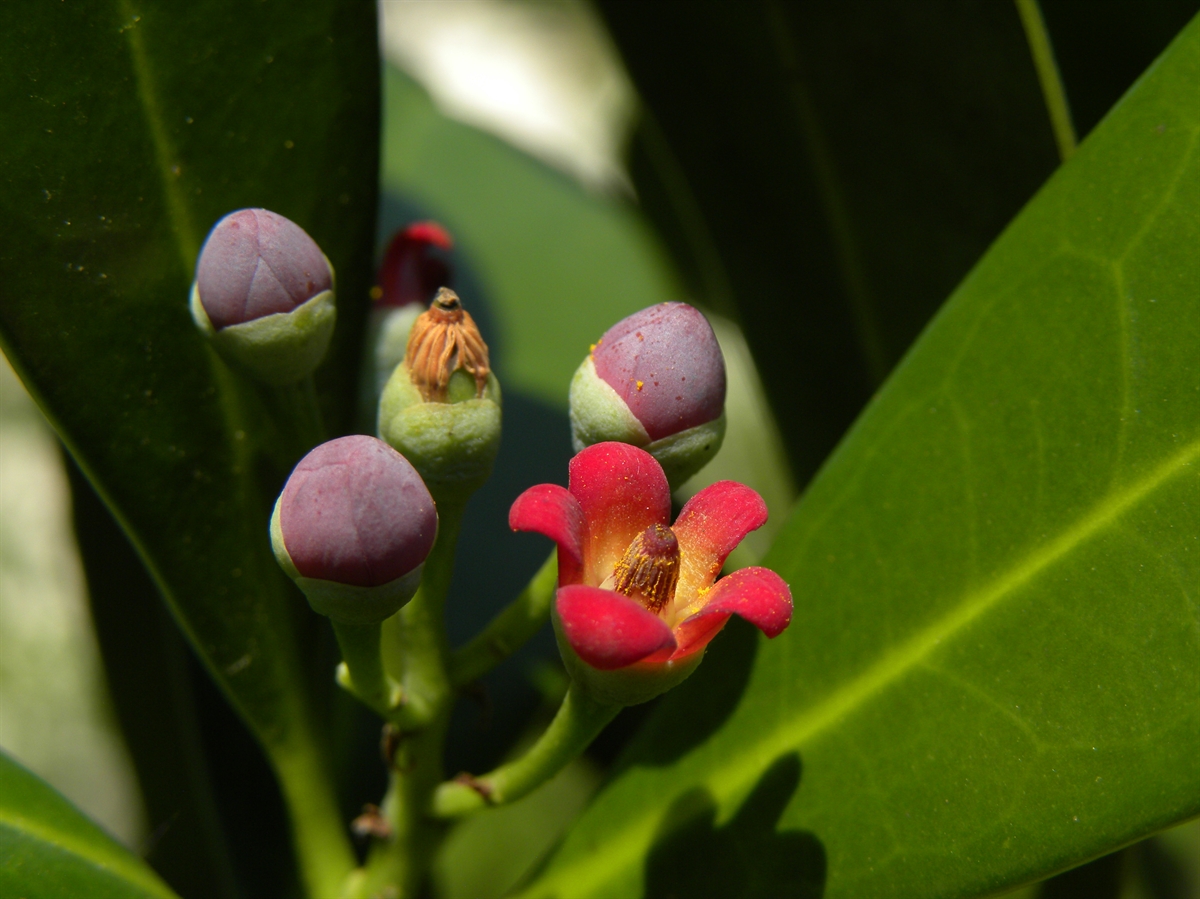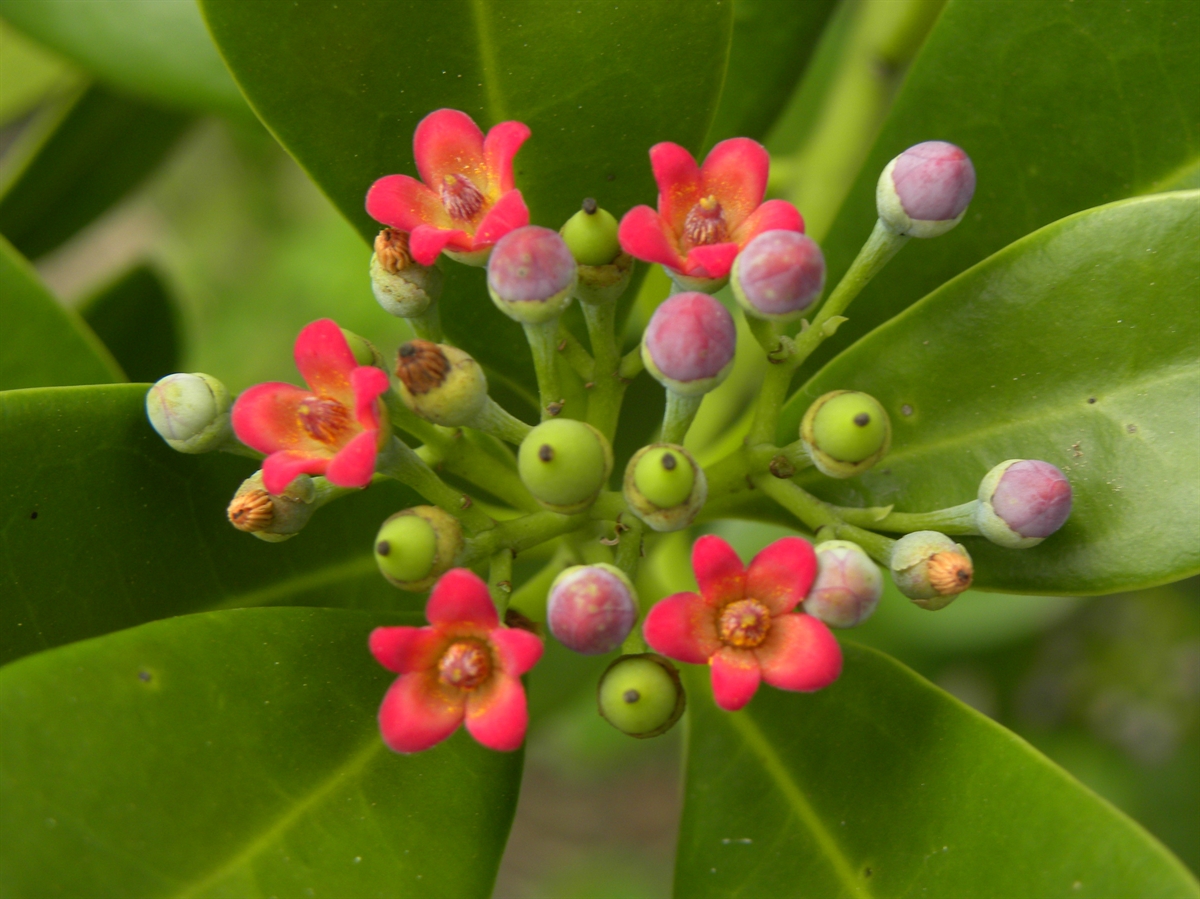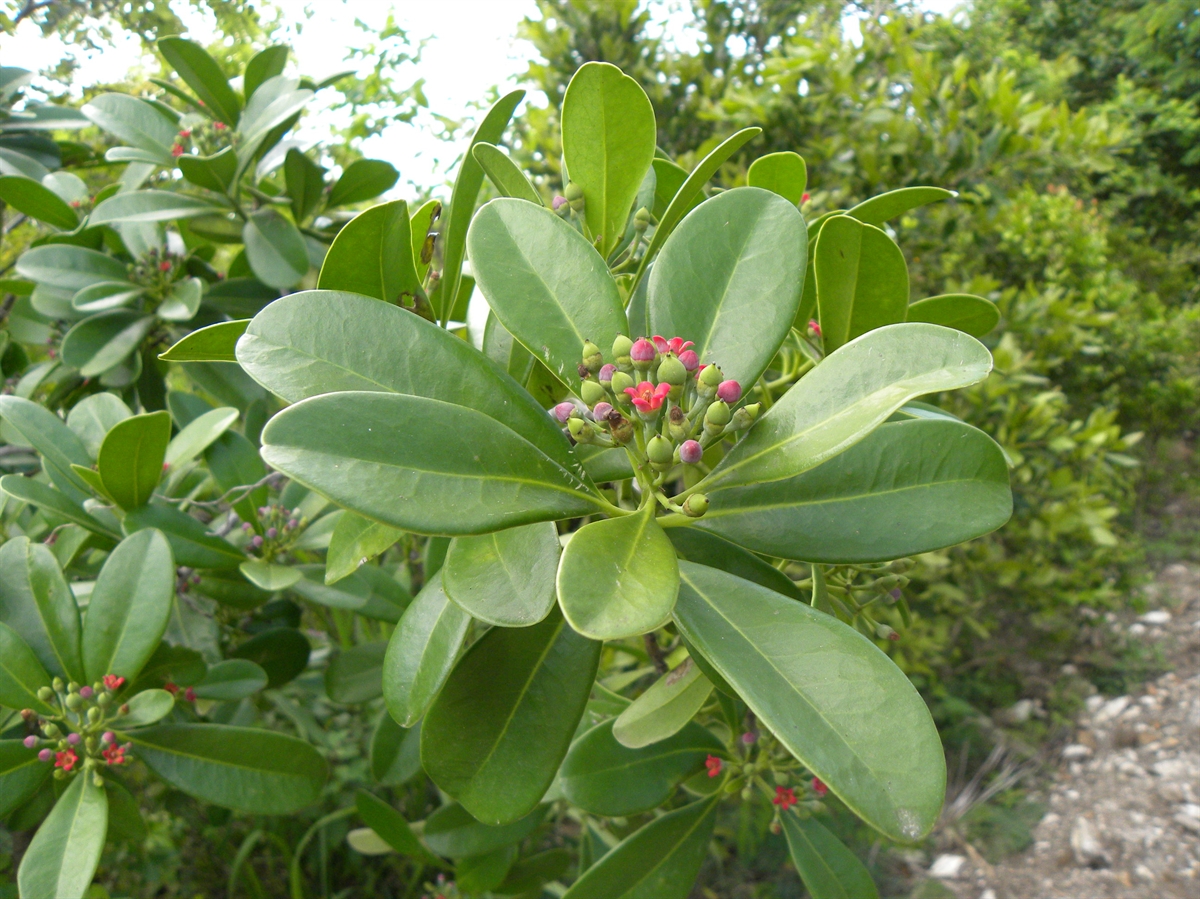Habit: Canella winterana grows as a medium to large tree up to 10 m in height with a trunk that is up to 30 cm in diameter that is a light grey. The leaves are arranged alternately but clustered toward branch tips. The leaves are to 10 cm in length, 4 cm in width, obovate to oblanceolate in shape with an obtuse leaf apex and an entire leaf margin. The leaves and bark are aromatic.
The complete, perfect, actinomorphic flowers are arranged in panicles. The calyx has 3 greenish sepals. The corolla has 5 bright red petals with a yellow base. There are numerous stamens forming a staminal column that is red turning yellow with age. The ovary is superior with a single locule. The fruit is a berry that turns purplish red at maturity. The seeds are black.
Canella winterana is functionally dioecious.
Habitat: Canella winterana grows in Dry Broadleaf Evergreen Formations – Forests/Shrublands (coppice).
Distribution: Canella winterana occurs throughout the Lucayan Archipelago, southern Florida, the Greater Antilles and the southern Caribbean.
Medicinal/Cultural/Economic usage: Canella winterana has been used medicinally to treat “female tiredness” by preparing a tonic made from boiling leaves and bark. Crushed leaves can be used to numb the pain of toothaches by placing them near the tooth. Tonics of the bark are also used to treat gastrointestinal issues. The bark and berries are dried and crushed and used commercially as a spice. The bark has also been used to flavor tobacco.
Canella winterana is used in the horticultural industry for its beautiful leaves and bright showy flowers and fruits. Care must be taken as wasps pollinate the flowers.




